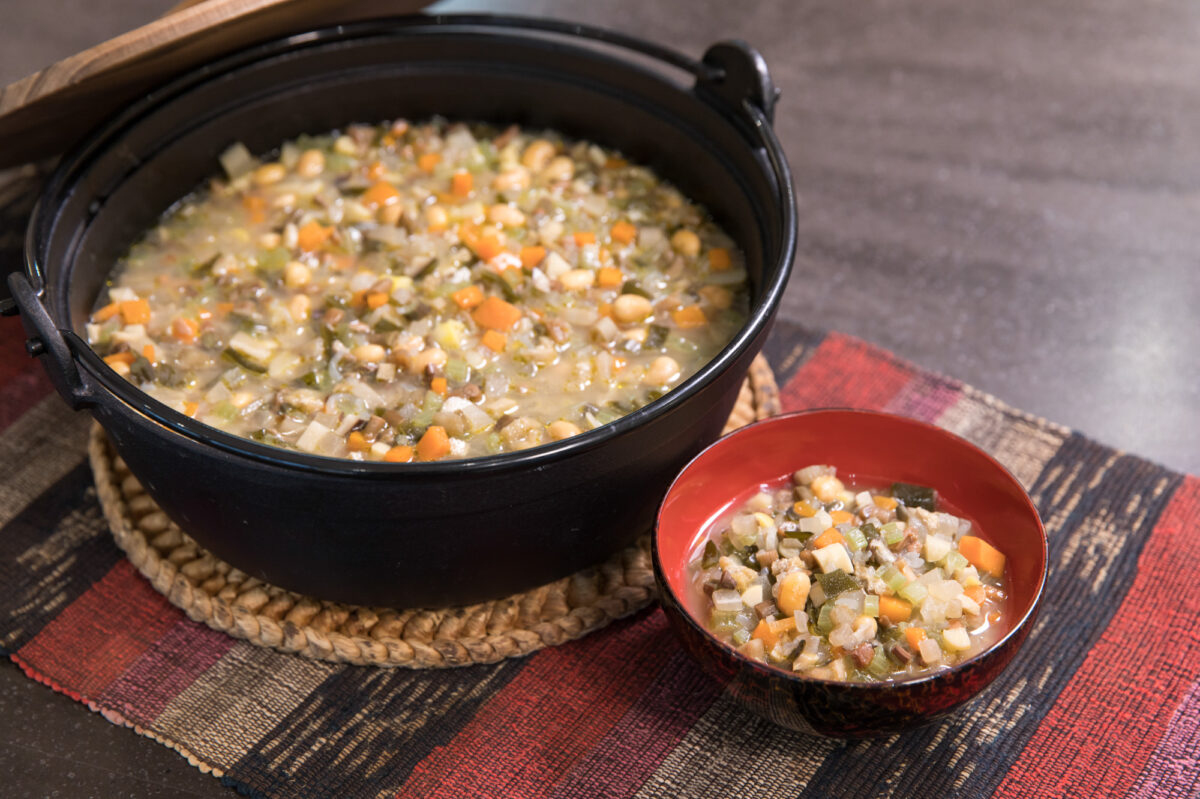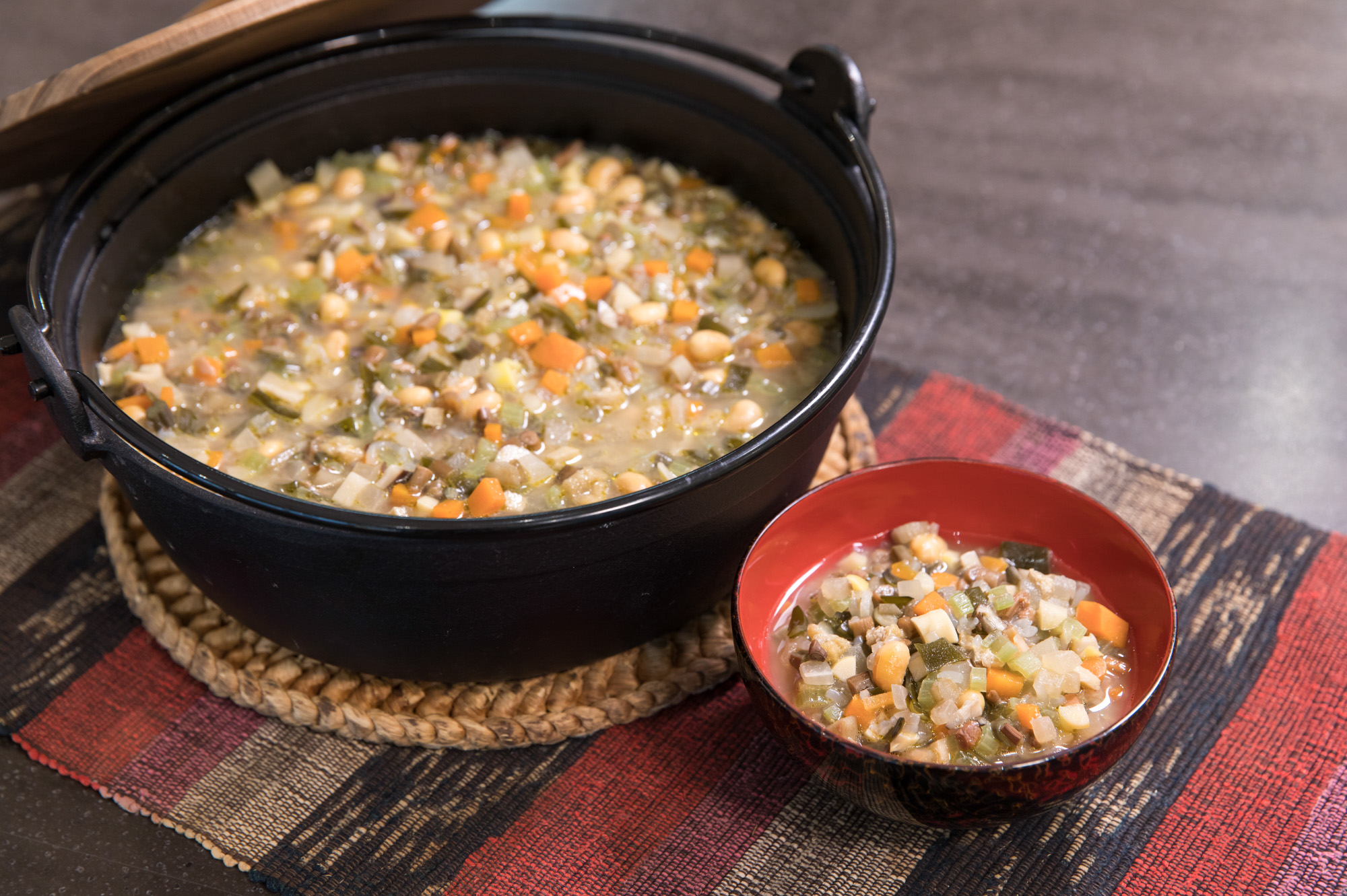
Hey there! Ever stumble upon a dish that’s more than just food, but a slice of history? In the Tsugaru region of Aomori Prefecture, there’s this local specialty called “Ke no Shiru.” It’s a flavorful soup packed with finely chopped veggies and mountain greens, and it tells a tale of resourcefulness and tradition.
Dish Name: Ke no Shiru
- Region / Location: Aomori Prefecture
- Primary Area of Tradition: Tsugaru region
- Main Ingredients: Daikon radish, carrot, burdock root, bracken, butterbur, deep-fried tofu, frozen tofu, soybeans, kelp, miso
How It’s Eaten / Served
The process starts with a whole lot of root vegetables, mountain vegetables, and mushrooms being chopped into tiny cubes. These are then simmered in a large pot with dried sardine and roasted kelp broth, along with water. A unique touch is the addition of “zunda,” which is mashed soybeans. This soup is meant to be made in large quantities and enjoyed over several days, as reheating it allows the flavors of the ingredients to meld together even more deeply.
Cultural Background and Preservation
With its roots possibly tracing back to the time of Tsugaru clan lord Tamenobu about 400 years ago, Ke no Shiru was traditionally prepared for Little New Year’s. It was a thoughtful make-ahead meal for the menfolk by the wives who deserved a break after the busy main New Year celebrations. This nutritious dish also served as a preserved food, with the frozen soup being broken up and reheated over several days. Often called “Tsugaru’s seven-herb porridge” and eaten to pray for good health in the coming year, each family has their own version, making it a true taste of home. While the meticulous chopping has led to a decline in home cooking, pre-cut ingredient packs are now available, and the “Tsugaru Ke no Shiru Preservation Society,” formed in 2003, actively works to promote this local culinary heritage.
Additional information:
- Little New Year (Koshogatsu): Celebrated around January 15th, it marks the end of the main New Year festivities.
- Dried sardine (iwashi no yakiboshi): Sardines that have been grilled and then dried, used to make flavorful broth.
- Roasted kelp (yaki konbu): Kelp that has been roasted, adding a deeper, smoky flavor to the broth.
- Zunda: Mashed soybeans, often sweetened, used in various dishes in northeastern Japan. In Ke no Shiru, unsweetened zunda is typically used to add richness and texture.
- Preserved food: Food that has been treated to prevent spoilage, allowing it to be stored and eaten over an extended period.
The information about regional cuisine featured on this website (Piggy's Grandma of Japan) is summarized and adapted from the Ministry of Agriculture, Forestry and Fisheries of Japan (MAFF) website, "Our Regional Cuisines"Additional commentary is provided based on the unique experiences and perspectives of the site's editors.
The copyright for the original content regarding regional cuisine belongs to the Ministry of Agriculture, Forestry and Fisheries of Japan.
The summaries and adaptations published on this site are intended for informational purposes only. Piggy's Grandma of Japan does not guarantee the accuracy or completeness of this information. For the most accurate and complete details, please refer to the original pages on the MAFF website.


